
Original Link: https://www.anandtech.com/show/2813
Notebooks at Netbook Prices: How Low Can We Go?
by Jarred Walton on July 28, 2009 12:00 AM EST- Posted in
- Laptops
Enter the $300 Laptop
It used to be that getting any laptop for under $1000 was virtually impossible unless you were willing to buy used. Since 2000, we've seen a huge surge in laptop sales along with an accompanying drop in prices. We've had new laptops starting at under $600 since around 2005, but a quick look at the specs of the laptops in that old article will show you just how far we've come in four short years. For those that don't want to follow the above link, here's a quick recap.
Four years ago, $600 would buy you a single-core processor (Celeron M or Sempron) running at between 1.4GHz and 1.6GHz. Hard drives were usually of the 40GB 4200RPM or 5400RPM variety, paired with 24X CD-RW/4X DVD-ROM combo drives. And here's something that's amazing in today's market: many inexpensive notebooks failed to provide built-in WiFi support (though you could add it for a moderate $50 or so). The real kicker however is that all of those cheap laptops checked in with a paltry 256MB DDR-333 RAM. Ouch! Battery life ranged from just over two hours to around four hours, which is one area where things unfortunately haven't really improved much.
What can you get in an entry-level notebook (not netbook!) these days? Best Buy and Wal-Mart have had $300 laptops in the news lately, though it appears both are "limited quantities/availability". Rather than restrict ourselves to short-term sales, we wanted to look at the specs of a few sub-$500 notebooks you can currently buy. We'll start with Wal-Mart's $300 offering as the baseline - it went on sale this past Sunday Morning (July 26) and likely sold out shortly thereafter. However, it's an in-store-only offering, so unless you run by your local Wal-Mart(s) there's no way to know for sure if it's available or not.
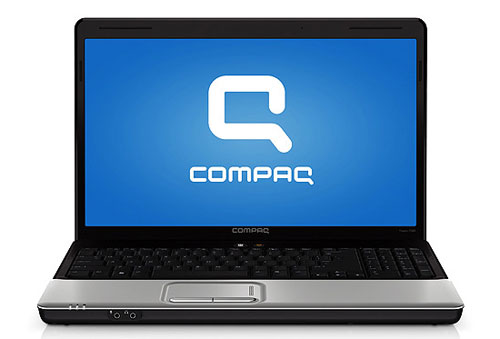
The $300 Compaq Presario 15.6" CQ60-419WM
This is not a powerhouse laptop by any stretch of the imagination, but if you want something that can run circles around a netbook and prefer a larger keyboard and screen (and lower battery life and increased weight) then this Compaq Presario has a lot going for it. The Sempron SI-42 is a single-core 65nm processor with 512KB L2 running at 2.1GHz - it should be rather similar in performance to the old Athlon 64 3500+, which should be about twice the speed of the Intel Atom N280 give or take. [Ed: Note that the link compares a dual-core 1.60GHz Atom with a single-core Pentium 4 3.6GHz - and the P4 660 ends up being about 65% faster on average; twice as fast is a conservative estimate!] For web surfing, office work, email, and other basic school needs such a CPU is more than "fast enough". Graphics are provided by NVIDIA's GeForce 8200M, which should handle even HD video playback.
Perhaps one of the best aspects of this notebook is that it comes with 3GB of DDR2-800 memory. Compaq ships the unit with Windows Vista Home Basic, which is naturally a 32-bit version. There's not much sense in getting a 64-bit version of Home Basic (why get a stripped down, 64-bit OS?), and while we could grumble a bit about not getting 4GB RAM for a few dollars more, without a 64-bit OS it really doesn't matter. Also keep in mind that Windows Home Basic is not eligible for Windows 7 upgrades (this applies to all the laptops in this article shipping with Home Basic). Rounding out the package you get a 160GB hard drive, DVDRW, and 802.11G networking. Battery life with the 6-cell battery is "up to four hours", though we suspect three hours will be more likely under light usage. The LCD quality on virtually all sub-$500 laptops/notebooks is going to be questionable at best, but it's doubtful anyone in the market for such a computer will notice.
This is a great laptop for the price - as a point of reference, the Compaq 15.6" CQ60-410US is very similar in overall specs (slightly lower in some areas and higher in others) and retails for $448. Of course, it's not a limited availability laptop. Assuming you can find the CQ60-419WM in stock, the real question is whether you like the lightweight netbooks with improved battery life or you prefer a larger display, keyboard, and laptop with better performance. You get what you pay for, and in this case it's a very reasonable trade if you're not a demanding computer user.
We can say the same about many other laptops, so let's look at a few of the alternatives that are available online and in stores. We searched Best Buy, Wal-Mart, and a few other websites looking for laptops that sell for rock-bottom prices while still providing all of the necessary features. We tried to avoid any limited time offers, which means prices are going to be higher than $300, but you should be able to find similar laptops at a variety of retailers. Here's what we found.
Other Wal-Mart Laptops
Wal-Mart has a reputation of driving costs down, and the $300 laptop does just that. However, we want to know what else users might need to look at once those special discount laptops are gone. We browsed through the current Wal-Mart site looking for other sub-$500 that looked reasonable.

Sticking with Wal-Mart for a few more systems, we have the Acer 15.6" AS5516-5474 for $378. The same laptop is at Frys for $340, so no Wal-Mart isn't always the lowest price around. Again, you can get an idea of just how good that $300 laptop is by comparison, since this Acer has a slower Athlon 64 TF-20 CPU (single-core, 65nm, 1.6GHz, 512KB L2) and less memory (2GB) at a higher price. Acer also uses the AMD RS690MN chipset with integrated ATI Radeon Xpress 1200 graphics - another downgrade relative to the Compaq laptop. All of the other features are essentially the same as the Compaq CQ60-419WM (160GB 5400RPM HDD, DVDRW, 802.11G) and this laptop will still be "fast enough" for typical computing tasks. Normally, this is about as cheap as it gets for a new full-size laptop, so sales are the better option if you're not in a hurry.
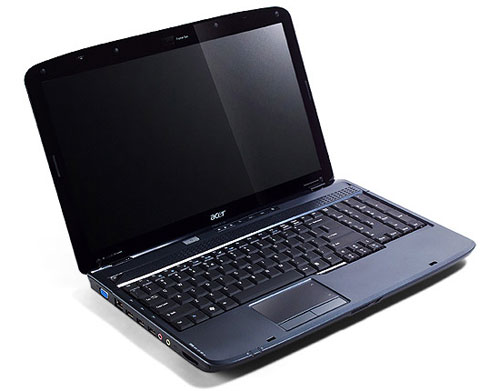
Here's an Intel version of the above system, with an Intel Celeron 585 processor (single-core, 65nm, 2.16GHz, 1MB L2, 667MHz FSB). Besides the change in CPU, this laptop also ships with a larger 250GB 5400RPM hard drive and 802.11N networking. It uses the Intel GL40 Express chipset with Intel GMA 4500M integrated graphics - a downgrade compared to ATI and NVIDIA integrated graphics. Battery life is listed as up to three hours. The current price of the Aspire AS5335-2238 is $448, so unless you really want an Intel processor and 802.11N networking we would look elsewhere. If you want a bigger laptop with a 1440x900 LCD, the Toshiba 17" Satellite L355-S7905 uses the same chipset/CPU combination and comes with 3GB RAM (and a 160GB hard drive, 802.11G WiFi, and lower battery life) for the same price.
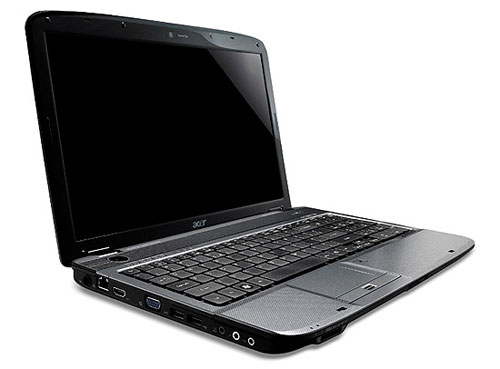
All of the system so far have been single-core processors, which were all the rage until about four years ago. It's true that you can still get by with a single-core system, but if we switch to dual-core CPUs we get quite a few other upgrades in the process. The Acer 15.4" AS5536-5883 builds around the AMD Athlon 64 X2 QL-64 (dual-core, 65nm, 2.1GHz, 2x512KB L2, 3600MHz HyperTransport), which is essentially two Sempron SI-42 processors. It uses the AMD RS780MN chipset with integrated ATI Radeon HD 3200 graphics. You also get 3GB RAM, a 320GB 5400RPM hard drive, DVDRW, 802.11N, Gigabit Ethernet, a webcam, and up to three hours battery life. The operating system also receives an upgrade to Windows Vista Home Premium 32-bit, with a free upgrade to Windows 7 Premium Edition when that begins shipping. This laptop costs over 50% more ($478) than the $300 special, but it does provide quite several meaningful upgrades and it's definitely worth a look.
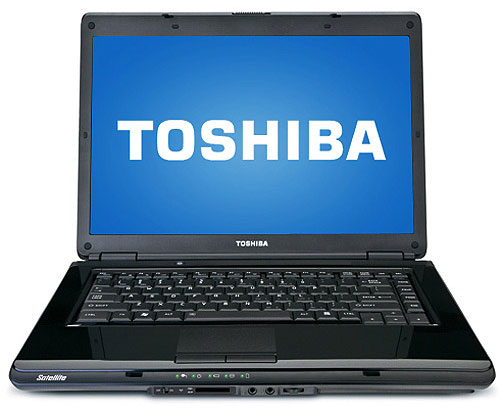
Our Intel dual-core offering from Wal-Mart is the Toshiba Satellite L305-S5961, which barely manages to squeak into our $500 price limit (also available at Buy.com for $480). Similar to the above AMD system, you get a few other upgrades like Windows Vista Home Premium with a free Windows 7 update. In other areas the comparison definitely favors AMD. The Intel Pentium T4200 (dual-core, 45nm, 1MB shared L2, 2.00GHz, 800MHz FSB) is a fair match for the Athlon X2 QL-64; Intel has the process technology advantage but both chips still specify 35W TDP. [Ed: Yes, I know TDP is not 100% comparable between AMD and Intel, but bear with me.] You only get 2GB RAM, the Intel GL40 Express Chipset/GMA 4500M chipset/IGP combination, a 250GB HDD, and 802.11G. Battery life isn't listed but we would guess it's somewhere between two and three hours maximum - similar to the Acer system. For the price, AMD definitely has the advantage right now in inexpensive laptops.
Best Buy Laptops
Shopping online at Best Buy, you can find items that are available at the stores as well as "outlet items" - discontinued items that are being sold at reduced prices. Some of the outlet items are particularly attractive, especially since we're not looking for top-end, modern hardware. The problem with these items is that we don't know how long they'll be available, and finding exact specifications is often difficult. As with Wal-Mart, there's definitely some attractive pricing available.
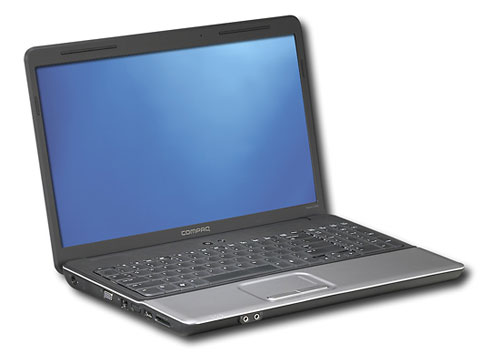
Priced at just $330, the Compaq Presario CQ60-211DX is a reasonable alternative to the $300 Wal-Mart laptop. As usual, there are a few notable differences. The processor is an Intel Celeron 585 (single-core, 65nm, 2.16GHz, 1MB L2, 667MHz FSB), which should provide similar performance to the Compaq Presario CQ60-419WM. However, you get 2GB RAM and the standard Intel GL40 Express Chipset/GMA 4500M chipset/graphics combination. Since this is an outlet item, we're not sure how long it will be available, but it's certainly a better alternative than the $450 Celeron 585 laptops we found at Wal-Mart.

This is possibly the best option in terms of bang for the buck right now, as you can get a dual-core AMD Athlon X2 QL-62 processor (dual-core, 65nm, 2.0GHz, 2x512KB L2, 3600MHz HyperTransport) and Windows Vista Home Premium for only $380. This laptop also uses an NVIDIA GeForce 8200M chipset and provides a 250GB hard drive. There's no webcam and it only ships with 2GB RAM, but you can upgrade the memory quite easily to 4GB for under $50. Battery life is listed as 2.5 hours, which is another drawback, but if you don't need to run on battery for long periods of time this should be a decent inexpensive laptop.
A similar system for a bit more money and 3GB RAM is the Toshiba Satellite L505D-S5965, which also upgrades the CPU to an AMD Athlon 64 X2 QL-65 (2.1GHz instead of 2.0GHz) and switches to the AMD M780V chipset with ATI Radeon 3100 graphics. The $50 price increase makes this something of a tossup.
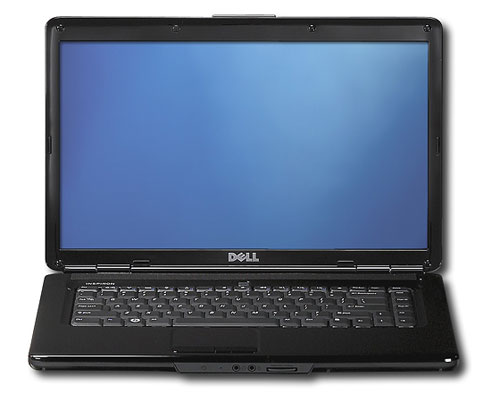
There are several similar Dell laptops listed at Best Buy for under $500; the best in terms of price and features is another outlet item, the Dell Inspiron I15-156B currently selling for $400. This one comes with an Intel Pentium T4200 (dual-core, 45nm, 1MB shared L2, 2.00GHz, 800MHz FSB), 3GB RAM, 160GB hard drive, GL40/GMA 4500M chipset, and Windows Vista Home Premium. Battery life is again listed as 2.5 hours.
An upgraded Dell Inspiron I1545-014B-WHT bumps the memory up to 3GB, hard drive 250GB, adds a webcam, and apparently doubles the battery capacity because battery life is listed as 4.5 hours. If you're concerned about battery life, this looks like a very good option for $500.
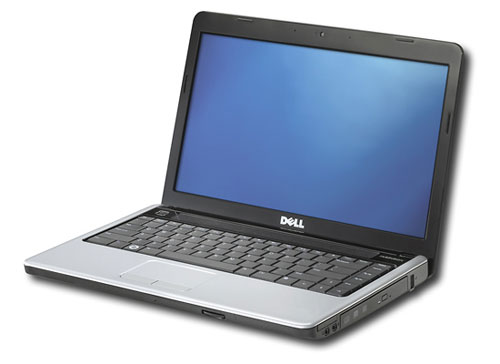
The final Best Buy laptop we want to mention is another Dell, this time a 14" Inspiron I1440-016B-BLK model. Once again the price is $500, and many of the specifications are similar to the above 15.6" Dell laptops. What's interesting is that this 14" laptop has more memory (4GB) and Vista Home Premium 64-bit along with a 320GB 5400RPM hard drive. The upgrades don't end there, as you also get Gigabit Ethernet and an LED backlit LCD. For the same price, why would anyone want to choose the larger Inspiron 15 listed above? The only question is battery life, which Best Buy doesn't specify. Dell's Inspiron 14 gives you the option of a 4-cell 37Whr, 6-cell 48Whr, or 9-cell 85Whr battery; the 4-cell battery will obviously weigh the least, but battery life would be very poor. Incidentally, putting together the same system at Dell's site ends up with a price closer to $600, though you do get the added flexibility of choosing your components (i.e. the battery). For $500, the basic Best Buy model has a very good feature set - and you can always add a larger battery in the future if necessary.
Other Online Vendors
You can probably find deals comparable to what we listed above at other brick-and-mortar shops - OfficeMax, Office Depot, Target, Costco, etc. should all have similar systems, with prices that may be slightly lower or higher. If you have the time to shop around more, keep an eye out for special deals as we've shown that the Wal-Mart $300 laptop is still one of the most compelling in terms of price and features. We checked out a couple other online vendors including Newegg and TigerDirect as one last point of comparison.
Newegg
Newegg actually had several of the same laptops we've already listed, for slightly higher prices or with slightly different features. The $380 Acer 15.6" AS5516-5474 from Wal-Mart for example is available at Newegg for $400 or at Frys.com for $340 (yeah, tough call). There's also a recertified Compaq Presario 15.6" CQ60-215DX for the same $380 price as Best Buy.

The most attractive Newegg offer at present is the Lenovo 15.4" G530-444635U, priced at $400. This comes with an Intel Pentium T4200, 2GB RAM, 160GB hard drive, DVDRW, and Windows Home Basic. It uses the ubiquitous Intel GL40/GMA 4500M chipset and boasts up to 4.6 hours of battery life. If you're willing to pay a bit more, the Lenovo G530-444636U has 3GB RAM, 250GB hard drive, and Windows Home Premium for $450, along with limited availability of a free Targus notebook carrying case combo (a $90 value!)
TigerDirect
There are many similar/repeat products, and one of the brand names we keep on seeing is Acer. Acer has made a huge push into the affordable notebook market, and they have been successful in increasing their market share. They may not always be the best built notebooks on the planet, but if you're looking for an affordable laptop it's almost impossible to escape their presence. Considering Acer now owns Gateway, their market presence is even greater than you might think. Looking at TigerDirect, the most interesting laptops all come from either Gateway or Acer, although a few others from Compaq, Lenovo, and Toshiba are also present. Like Newegg, most of TigerDirect's non-netbook offerings are closer to our maximum $500 price point.

First up is the Acer Aspire 15.6" AS5535-5452, a $450 laptop that includes a dual-core AMD Athlon X2 QL-64, 3GB RAM, 320GB 5400RPM hard drive, 802.11N, Gigabit Ethernet, webcam, ATI Radeon HD 3200 integrated graphics, and Vista Home Premium. It's extremely similar to the Acer AS5536-5883 at Wal-Mart, with a slightly lower price.
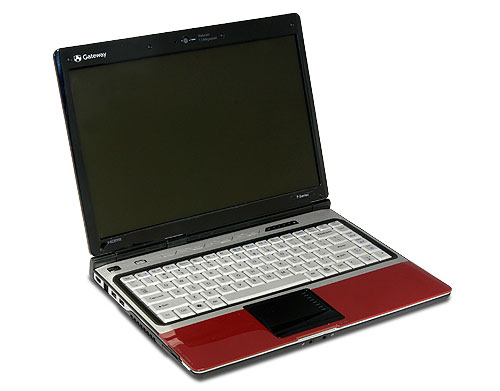
For $30 more, the Gateway T-1424u is a 14" laptop that has similar features in many areas. The primary changes are that it uses the Athlon X2 TK-67 (dual-core, 65nm, 1.9GHz, 2x512KB L2, 1600MHz HyperTransport), a slightly slower dual core chip compared to the QL-64 but one that also uses a bit less power (31W TDP vs. 35W TDP). The chipset is the AMD M690T with ATI Radeon Xpress X1270 graphics, and networking is downgraded to 802.11G/100Mb Ethernet. Gateway doesn't specify the battery life, which is unfortunate, but the smaller chassis is a nice option for thin and light notebooks. The Gateway M-1631U is virtually the same concept in 15.4" trim with a TL-60 CPU (dual-core, 65nm, 2.0GHz, 2x512KB L2, 1600MHz HyperTransport) priced at $500. The M-1631U also upgrades the memory to 4GB and comes with Windows Home Premium 64-bit.

Two final $500 notebooks from TigerDirect are the Lenovo 3000 G530 4446-24U and the Toshiba 15.4" Satellite L305-S5961. You can also buy the Lenovo at CompUPlus for $487 plus shipping or the Toshiba from Amazon for $480. As mentioned, these brands tend to cost a bit more for the provided features. Toshiba doesn't include a webcam and uses the GL40/GMA 4500M chipset with a Pentium Dual-Core T4200 CPU, 2GB RAM, 250GB HDD, and Vista Home Premium 32-bit. The Lenovo 15.4" 3000 G530 is almost the same but with 3GB RAM and a Pentium Dual-Core T3400 (dual-core, 65nm, 1MB shared L2, 2.16GHz, 667MHz FSB). Lenovo also includes a webcam (0.3MP), and we would give them the edge simply based on the overall appearance and styling. Lenovo may not make flashy notebooks, but they are well built and many people like the conservative styling.
A Bird's Eye View of Sub-$500 Laptops
ASUS and the Eee PC deserve a large portion of the credit for many of the current trends we see with inexpensive laptops. All netbooks must pay homage in part to the Eee PC, and ASUS managed to show the market that there's a large number of people who are interested in laptops that are merely "fast enough" - provided they are also very affordable. Four years ago, inexpensive laptops often had major compromises in the features department - especially when it came to not providing enough memory. While there are still plenty of 2GB laptops available and some would say that's not quite enough, the reality is that we've plateaued and many users are perfectly happy running moderate dual-core machines and 2GB of memory. If you're looking for something similar in an inexpensive mobile computer, your choices boil down to a few general areas.
We will leave the netbook coverage for another date, but at the low end of the pricing spectrum (+/- $300) there are a ton of netbooks available. These pretty much all use the Intel Atom processors, and a 1.6GHz Atom N270 CPU is roughly the equivalent of a 1.2GHz Pentium M (state-of-the-art circa 2003). Even though you might have more memory these days (most notebooks come with 1GB RAM now), there are definitely limitations to what you can do with such a system. The true benefits are their small size and often very good battery life. These systems also ship with Windows XP for the most part, which is definitely a better fit than Vista for a 1GB system. There was a time when any laptop smaller than 12" carried a huge price premium, and the netbook has virtually single-handedly killed that market. At the very least, small laptop prices have dropped dramatically.
The next step up from netbooks should cost under $400. These are sometimes older ~15.4" laptops on clearance, or they might be slightly newer designs that try to keep costs as low as possible. You usually get a single-core processor running at around 2GHz. Remember the old Athlon 64 3200+ from October 2003? Imagine updating that CPU to a more recent 65nm process technology (sometimes even 45nm) with a few other tweaks and you won't be far off. The interesting thing is that such systems are still more than fast enough to do 95% of what people need, especially if they have enough memory. If netbooks are "fast enough", a single-core 2GHz Athlon 64/Pentium M style processor is often 60% faster (or more!) than the Intel Atom N280, so outside of gaming and other CPU/GPU intensive tasks such a system shouldn't have any problems. Most of these laptops will come with Vista Home Basic, a more limited version of Windows Vista though it keeps many of the core features. Keep your eye out for special offers, i.e. the Best Buy and Wal-Mart $300 laptops, and just don't expect the equivalent of a $1000+ laptop. Try before you buy if at all possible, since things like the keyboard and screen are difficult to judge without hands-on time.
If you still need more power, another $100 can get you a ~2GHz dual-core processor (twice the theoretical performance) along with upgraded integrated graphics. Casual gaming titles like Sims 3 should run on these systems, although probably not at the native LCD resolution (1280x800 or 1366x768) and at low detail settings. Most $500 laptops will also come with Windows Vista Home Premium, and we would recommend trying to get the 64-bit version along with a laptop that includes 4GB RAM. You can also choose between 14" and 15.4"/15.6" laptops, so somewhat less bulky options are available. These laptops should easily last another 5+ years, provided they don't break and you don't change your computing demands. While both AMD and Intel-based systems exist in this category, there's no getting around the fact that the AMD laptops have better features for the same price. This usually consists of more memory and better integrated graphics, and while Intel definitely has the fastest processors around right now with the Core i7 line, the low-end Pentium Dual-Core chips are nothing to write home about. Clock for clock, Intel and AMD are very similar in the low-end markets, so the other features become a lot more meaningful. Remember to pay attention to battery capacity; most of these laptops have extremely similar components, so twice the battery capacity equates to twice the battery life. An extra $50 for a higher capacity battery definitely improves the mobility aspect of these notebooks.
We haven't tested any of the laptops in this article, but we tried to stick to options that have a reasonable reputation online. We are working on getting manufacturers to send us laptops that cater to what our readers actually buy as opposed to simply sending us the biggest, fastest desktop replacement notebooks. We will continue to look at that market segment as well, but there's no getting around the fact that most laptops sell in the sub-$1000 price range. Finally, we had a hard limit of $500 for all the notebooks listed in this article; as is always the case, spending more money will open up additional options. Most of the options are incremental upgrades to what we've already discussed, so you can decide whether an extra 10% CPU performance and perhaps a discrete GPU make sense.
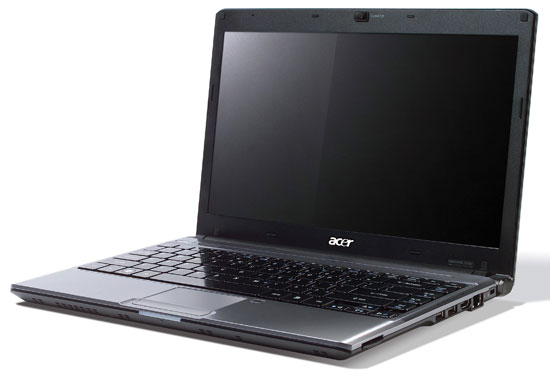
There is one laptop we do want to mention, however: the Acer Aspire 13.3" Timeline. For just $50 more than our price limit, the Timeline claims to provide up to eight hours of battery life (reportedly around 7 hours in moderate usage scenarios). You get an Intel Pentium SU2700 1.3GHz processor (single-core, 45nm, 2MB L2, 1.30GHz, 800MHz FSB), so performance is actually going to be closer to netbooks, but 4GB DDR3 memory, 320GB HDD, Vista Home Premium 64-bit, 802.11N WiFi, Gigabit Ethernet, and an LED backlit 1366x768 LCD are all good features. Note also that there is no optical drive on the 13.3" models (the 14" and 15.6" models include a DVDRW), and Acer envisions it as an alternative to the MacBook Air. This is about one third the price of the MacBook Air with similar battery life, which is great, but the Timeline's CPU is also far slower than the Air's default Core 2 Duo SL9400 (dual-core, 45nm, 6MB shared L2, 1.86GHz, 1066MHz FSB). We hope to have the Timeline in for review shortly.







